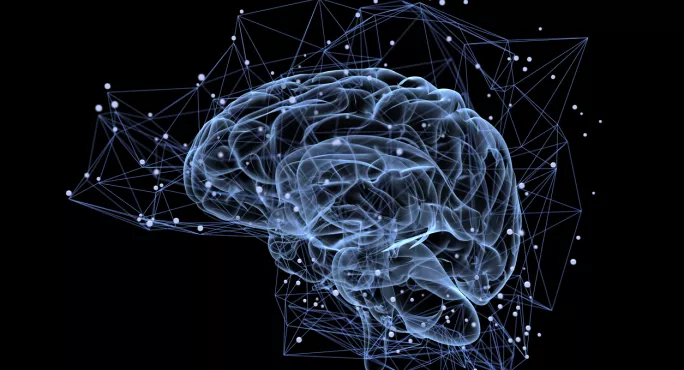- Home
- Why teachers should tune into their emodiversity
Why teachers should tune into their emodiversity

If you’d never heard of the word “sad”, could you still feel “sad”? And, if you could, how would you know that you were feeling “sad”?
Take it further and imagine you have no words at all for any emotions.
Would you still be able to tell the difference between sadness, boredom, anxiety, hopelessness and simply feeling tired?
That might sound far-fetched, but we’ve all spent at least two years in this situation.
Learning your emotions
For the first two years of your life, before two parts of your brain - the dorsolateral cortex and the anterior cingulate - started to mature, you weren’t able to use words as symbols to represent your feelings.
Imagine that leap - when you first started to figure out what sadness was. When you realised that you felt “sad” sometimes, and so did other people.
If you were lucky, from there you rapidly built up the range of emotions you could name because you had adults around you who talked to you about emotions, and read you books where you got an insight into the interior world of other people.
Unfortunately, even the most well-intentioned parents will often be so busy that this kind of dialogue and shared experience will be squeezed out, because it takes effort and energy and time.
But it’s so important, because it the more emotions we can notice and name, the better we become at handling them. This is to do with something called “emodiversity”.
What is emodiversity?
Emodiversity is very much like biodioversity - a biodiverse ecosystem is one with lots of different plants and other organisms. This makes the ecosystem strong because no predator or disease can kill all the different types of organism at once. It’s similar with emodiversity.
Having a wide range of emotions that you can notice and name means that it’s harder for a single emotion to overwhelm you.
So, how do you increase the range of emotions you can notice and name?
First, you need a map.
All emotions can be placed on a circumplex, which is basically a circular graph with (in this case) two dimensions - high/low energy and pleasure/displeasure.
To make it easier to use, The Yale Centre for Emotional Intelligence splits this graph into four “zones”.
The extreme edge of the high-energy/displeasure “red zone” would be emotions like fury and panic. Staying at high energy but moving over to the far edge of the high pleasure “yellow zone” would be a feeling like ecstasy.
If you keep the high pleasure but drop down to the edge of the low energy “green zone”, you get an emotion like serene. Finally, at the edge of the low-energy/displeasure “blue zone”, you have something like hopelessness.
As you move into the centre of the circumplex, you find less extreme emotions. For example, in the red zone, you might move from furious to angry to annoyed or uneasy.
For teachers, such emotions may not be as extreme in school (we hope), but they will all exist to some extent.
Understanding in the moment what you are feeling about a situation - a stressful meeting, a difficult behavioural challenge, a happy lesson - helps you to better react and process the event than if you respond without noticing and accepting the underlying emotions that are driving your behaviour.
Plotting yourself on the map
By thinking about where you are on this map, at any given time, you’re taking the first steps in widening your emodiversity.
Being able to place your current emotional state on a map like this also helps you to remember that emotions are transitory - although you might be in the blue zone at the moment, you can still see the more pleasurable yellow and green zones, and you know you’ll get back there in time.
But, ultimately, to increase our emodiversity we need to do two things.
Firstly, read fiction. It’s the best way to discover new emotions, to find new words and ways to articulate emotions we’re already experiencing but couldn’t crystallise.
To some extent, you can do the same thing with movies and lyrics, especially if you discuss, with others, the emotions that the characters and artists are experiencing and describing.
Secondly, be open about your own emotional experience. Sharing your emotional experiences with others helps both parties to increase their emodiversity.
We are not so different
And it also has a profound side effect. One of the problems with being human is that there’s only one person we can really know inside and out - that’s us.
We know about all our own emotions, but we can’t see all of those same emotions in others, because most people try to cover up what they may see as “negative” emotions, such as feelings of anxiety, shame and depression.
That can sometimes lead us to think that we’re strange, that we are more anxious and vulnerable than those around us.
Often, when you open up about your emotional life, you find that lots of people experience the same range of emotions that you do - including those of anxiety, shame and depression - and that can be a great relief.
Aidan Harvey-Craig is a psychology teacher and student counsellor at an international school in Malawi. His book, 18 Wellbeing Hacks for Students: Using psychology’s secrets to survive and thrive, is available for pre-order. He tweets @psychologyhack
Keep reading for just £1 per month
You've reached your limit of free articles this month. Subscribe for £1 per month for three months and get:
- Unlimited access to all Tes magazine content
- Exclusive subscriber-only stories
- Award-winning email newsletters



